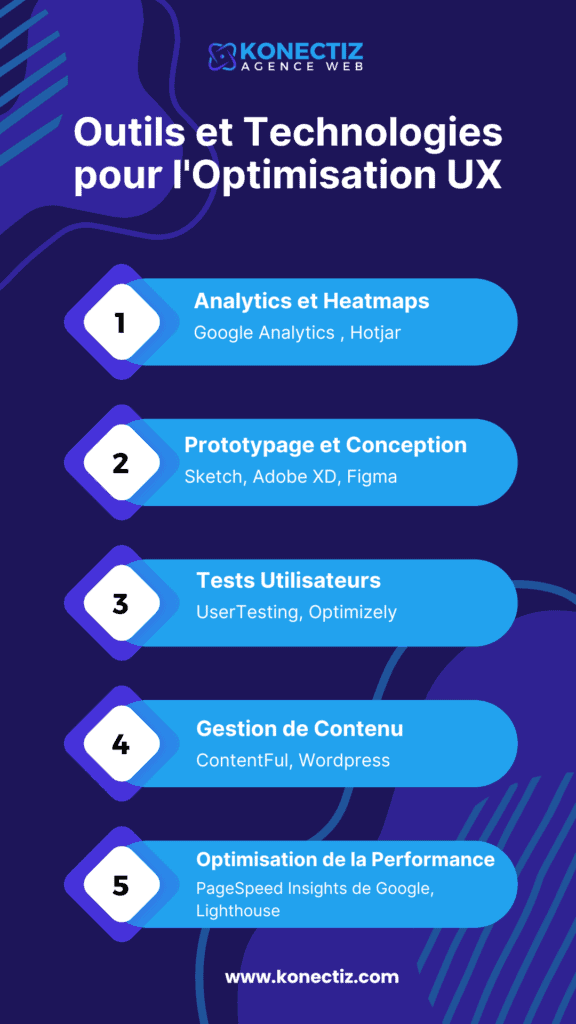Introduction
Have you ever visited a website and been confronted with a mediocre user experience? Pages that take forever to load, buttons that don’t work, misaligned design elements – all these can quickly put users off. That’s why optimizing user experience (UX) is so important for website owners.
In this article, we’ll present you with the ultimate UX optimization tips to enhance your users’ experience. From small changes to major transformations, we’ll guide you through proven techniques to make your website more attractive, functional and engaging. Whether you’re a website owner or a designer, these tips will help you create user-friendly interfaces that appeal to users and encourage them to stay longer on your site. So get ready to take your user experience to the next level and impress your visitors from the moment they arrive on your website.
Understanding user experience (UX)
User experience (UX) refers to the way users interact with a website or application. It covers all aspects of this interaction, from navigation and usability to visual design and accessibility. Understanding UX is essential to creating interfaces that meet users’ needs and expectations.
A good user experience is crucial to keeping users on your website and coming back for more. Studies show that visitors are more likely to leave a website if the user experience is poor. By optimizing the UX, you can increase visit time, reduce bounce rates and improve conversion rates.
The importance of optimizing the user experience
Optimizing the user experience is a priority for website owners. A positive user experience can translate into increased traffic, higher conversion rates and greater user loyalty. On the other hand, a poor user experience can have negative consequences for your business.
Investing in UX optimization may seem expensive, but it can be extremely beneficial in the long term.
Studies have shown that every dollar invested in UX can generate a return on investment of $100 or more. It is therefore essential to devote time and resources to improving the user experience.
User behavior and conversion rates
To optimize the user experience, it’s important to understand how users behave on your website. By analyzing navigation and conversion data, you can identify problems and friction points that discourage users. One way to obtain this information is to conduct user research.
You can use analytics tools to track users’ journeys through your website, observing where they click, how long they spend on each page and where they abandon. This information will help you identify potential problems and take steps to resolve them.
Conduct user research for UI optimization
User research is an essential step in user interface optimization. It enables you to understand your users’ needs, motivations and expectations. This in-depth knowledge will help you create a user interface that meets their needs and keeps them on your website.
There are various methods of user research, including interviews, surveys, user tests and analysis of user feedback. These methods enable you to gather valuable information on user preferences and behaviors, so you can make informed decisions when optimizing the user interface.
Analyze website metrics to improve user interface
Optimize website navigation and structure
Improve website loading speed
Implementing responsive design for mobile users
Tools and Technologies for UX Optimization
The rapid advance of technology has opened up exciting new possibilities for enhancing the user experience (UX). Here’s a selection of essential tools and technologies for optimizing UX.

1. Analytics and Heatmaps
– Google Analytics: Gain valuable insights into user behavior, conversion paths and site performance.
– Hotjar: Offers heatmaps, session recordings and surveys to understand user behavior and identify interaction points.
2. Prototyping and Design
3. User testing
– UserTesting: Facilitates large-scale user testing for fast, accurate feedback.
– Optimizely: Perform A/B and multivariate tests to optimize user experience and conversion rates.
4. Content management
– Contentful: Manage content flexibly and distribute it across multiple channels.
– WordPress: A popular content management platform with a wide variety of themes and plugins to customize the user experience.
5. Performance Optimization
– Google PageSpeed Insights: Analyzes page loading speed and provides suggestions for optimization.
– Lighthouse: A website quality audit tool that tests performance, accessibility, SEO best practices, and more.
A/B testing and user feedback for UI optimization
A/B testing and user feedback are powerful tools for optimizing the user interface. A/B testing involves comparing two versions of the same page to determine which works best. You can test different elements such as text, colors, buttons and layouts to find the optimum combination.
In addition to A/B testing, it’s important to gather user feedback. User feedback can help you identify problems and friction points you may have missed. You can obtain feedback using surveys, comment boxes or user tests.
Conclusion
Optimizing the user experience is essential to attracting and retaining users on your website. By understanding user needs and expectations, analyzing website metrics and implementing optimization techniques, you can improve the user experience and achieve better results for your business. Use these ultimate UX optimization tips to create user-friendly, engaging interfaces that will impress your visitors from the moment they arrive on your website.





